For us at the Gentleman’s Gazette, style is a personal journey that develops over time–and this principle is embodied by Sammy Davis Jr., a Hollywood icon whose style remains memorable to this day! In this installment of our How to Dress Like series, we’ll discuss the life and career of one of the 20th century’s most multifaceted entertainers, and how you can emulate his signature style.
The Life & Career of Sammy Davis Jr.
Sammy Davis Jr. is a Hollywood icon who worked as a singer, dancer, actor, comedian, and activist, and his career spanned six decades. He was perhaps best known as a member of the Rat Pack and his biggest hit song, the catchy single The Candyman hit number one on the Billboard charts in 1972, but he was already a well-established entertainer long before that with a rich and storied career.
Early Life
Davis whose full name was Samuel George Davis Jr. was born on December 8, 1925, in the Harlem neighborhood of New York City. For decades, Harlem had been a crucible of black talent in the United States and Sammy Davis’ family was no exception.
His father Samuel George Davis Sr. was an African-American vaudeville performer and his mother Elvera Sanchez was a tap dancer and comedienne of Spanish and Afro-Cuban roots.
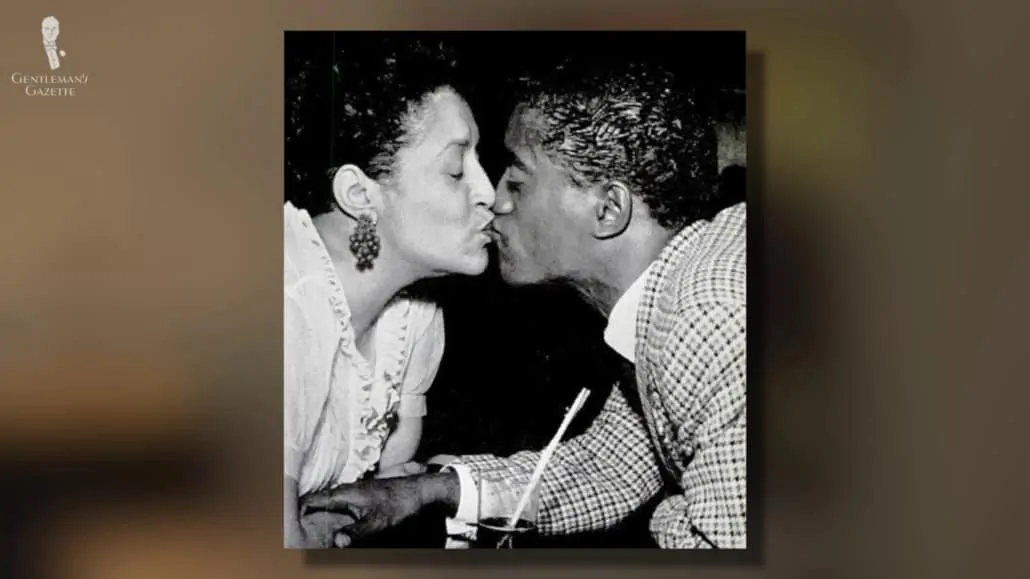
Davis learned a great deal about entertainment from his father and the vaudeville troupe he belonged to, the Will Mastin Trio. Because of this vaudevillian background, Sammy became proficient in all of the standard entertainment disciplines, including acting, dancing, singing, comedy, and even impressions, although he’s most remembered today for his incredible tap dancing routines and his music.
US Army Experience
In 1943, Davis was drafted into the United States Army, where, unfortunately, he encountered prejudice and abuse at the hands of his fellow soldiers. Davis later said that because he had grown up amongst black entertainers and performed largely for black audiences, his experiences in the army were his first real encounters with racism. Unfortunately, they wouldn’t be his last.
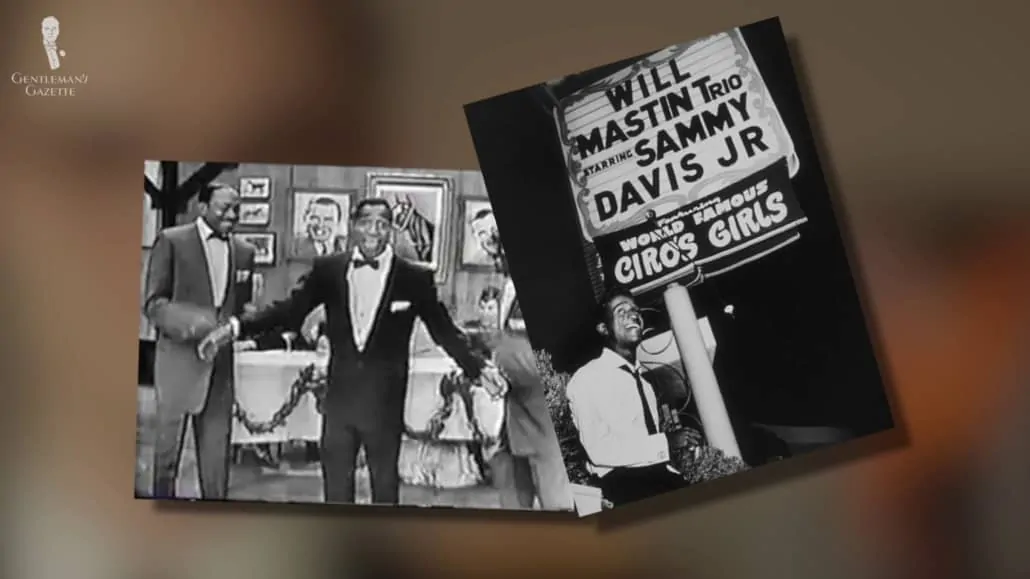
He often had to contend with racial intolerance from many of his fellow soldiers, getting into frequent fights and having his nose broken several times. Eventually, he was reassigned to the entertainment branch of the army where he was able to perform for his fellow troops. After the war, he was honorably discharged from the army and then resumed performing with the Will Maston Trio.
Losing An Eye & Gaining A Pack (The Rat Pack)
A near-fatal car accident in 1954 resulted in the loss of his left eye. While he was recuperating, he began to discuss religion with his friend Eddie Cantor, himself a famed Jewish comedian and Davis would later convert to Judaism himself. Within a few months of the accident, Davis had recovered and was back to his rigorous performing schedule appearing in the Broadway show Mr. Wonderful in 1956.
He appeared on the cover of his first album wearing an eye patch after his accident, and this confidence attracted the attention of Frank Sinatra, who was, of course, a very popular singer in his own right by this time. Sinatra and Davis became fast friends and by 1959, Davis was a member of a group that included himself and Sinatra as well as Dean Martin, Joey Bishop, and Peter Lawford. This group would come to be known in popular culture as the Rat Pack.
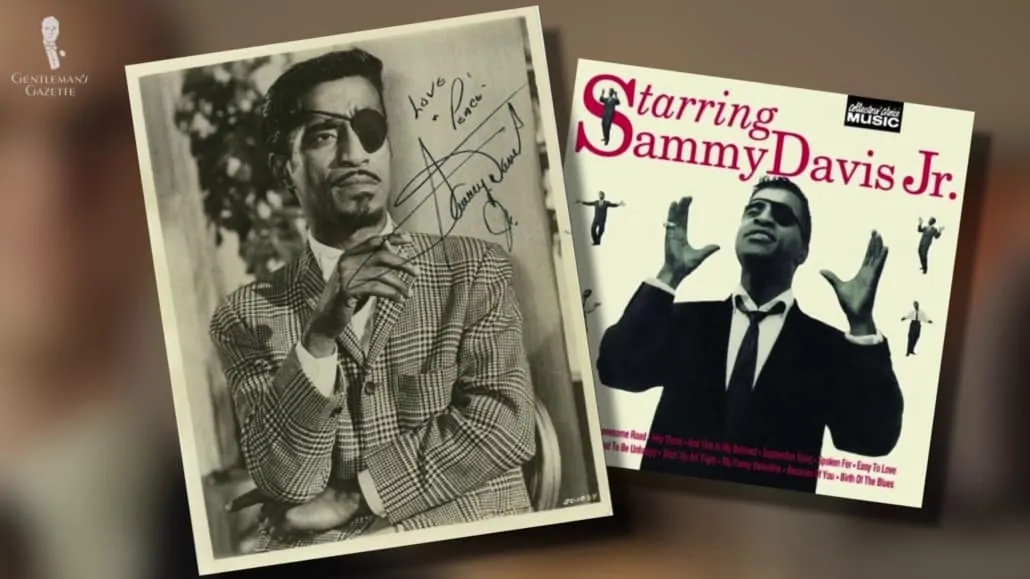
Although he was already a moderate star in his own right, Davis’ association with the Rat Pack catapulted his career to new heights. Davis made his most popular films while he was a member of the Rat Pack, including Ocean’s 11 in 1960, Sergeants 3 in 1962, and Robin and The Seven Hoods in 1964.
Davis also maintained an active presence on the nightclub scene, in the recording studio, and on Broadway where his talents as a singer and dancer were always in demand. He was also an active supporter of the civil rights movement of the 1960s, headlining several events to raise money for the work of Dr. Martin Luther King Jr. and the Southern Christian Leadership Conference.
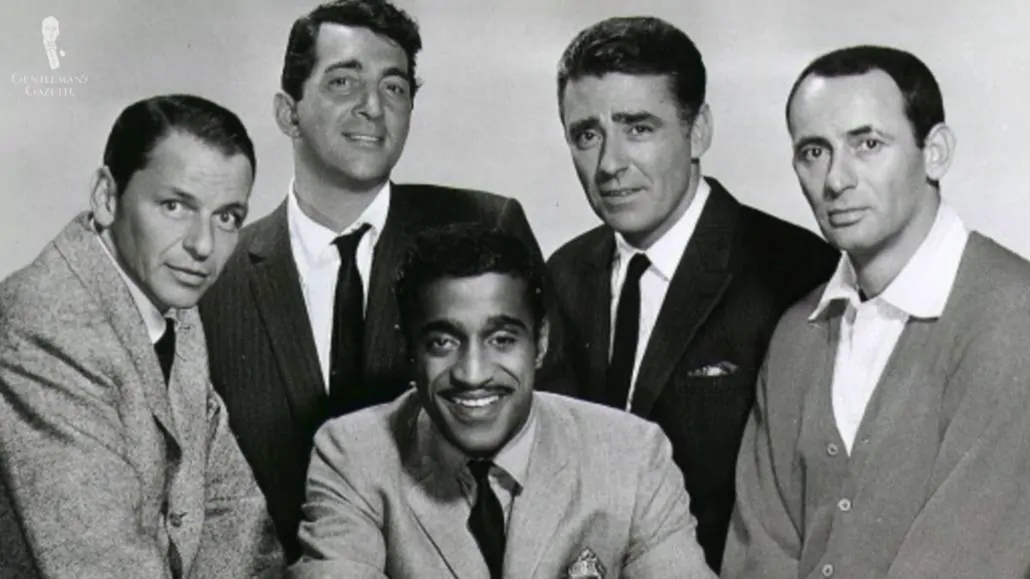
In 1967, Davis became the first black man to be featured on the cover of GQ magazine wearing a double-breasted checked suit and matching overcoat that had been tailored by Rat Pack tailor Sy Devore.
Career Downfall & Death
By 1968, after career stress and marital troubles, Davis’ career began to flounder and he did descend into drug and alcohol abuse. Fortunately, though, his third and final wife, Altovise Gore, herself an entertainer, helped Sammy to break these addictions and resume his career.
Davis would remain a popular figure in Las Vegas and on television, especially on variety shows where he liked to discuss his various hobbies, everything from trick shooting to photography. By the late 1980s, though, Davis’ wild lifestyle of drinking and partying had caught up to him and he was now suffering from cirrhosis of the liver and throat cancer.
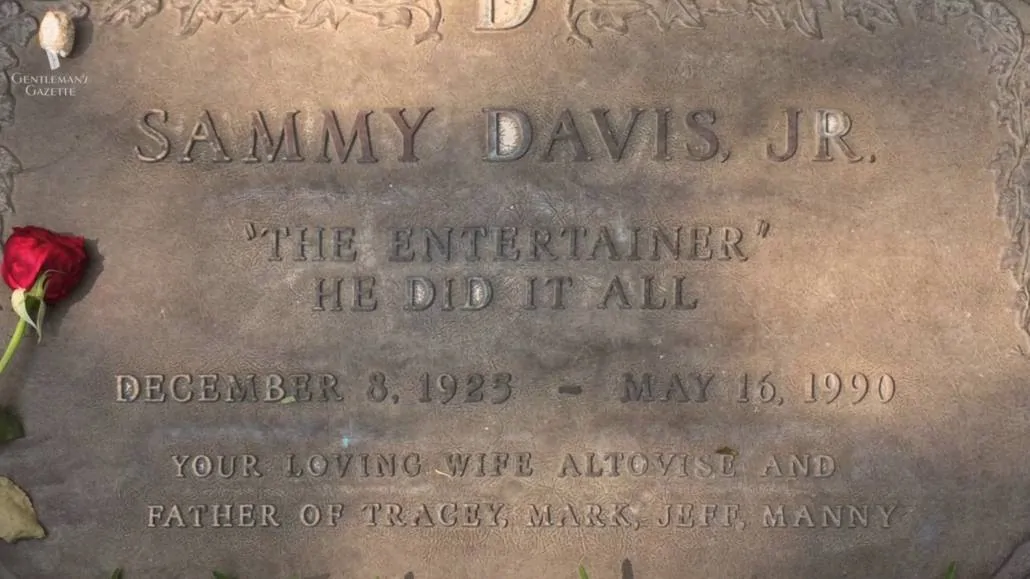
A planned tour in 1989 had to be scrapped so that he could seek medical attention and sadly, he passed away from complications due to throat cancer on May 16, 1990, in Beverly Hills. Two days later in tribute to Davis, the lights on the Las Vegas strip were dimmed in his honor and his tombstone fittingly reads, “The Entertainer; He did it all.”
Sammy Davis Jr.’s Style: Diverse & Progressive
Even in his first film appearance in 1933 in Rufus Jones for President at the age of just seven years old, Sammy already looked incredibly stylish in a double-breasted jacket and flat cap. But over the ensuing decades, Sammy’s wardrobe would become very diverse, just as his career would.
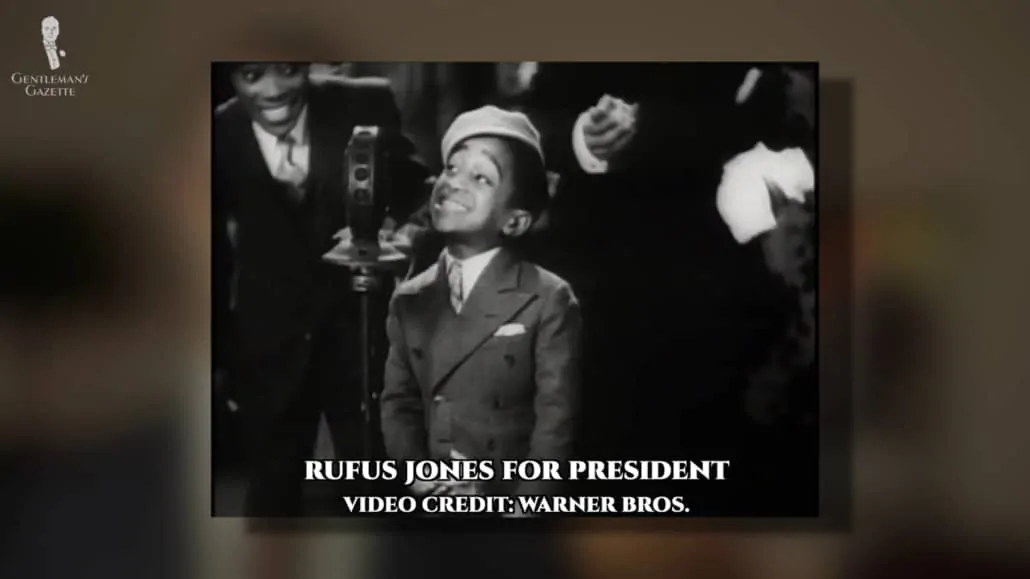
He would wear different kinds of things in his movies, on stage, and in his personal life. While certain elements of his style would change to suit the trends of various decades, other elements stayed with him as part of his central style philosophy.
The Suits of Sammy Davis Jr.
Davis was rarely seen without a suit of some kind and while he would follow some of the more dated trends in the 1970s, his overall choices tended to be darker in tone, and often solid but sometimes with a subtle pattern, like a light check. Early on in his career, he favored single-breasted two-button suit jackets, which were standard for men of the day and, of course, are still a popular choice even today.
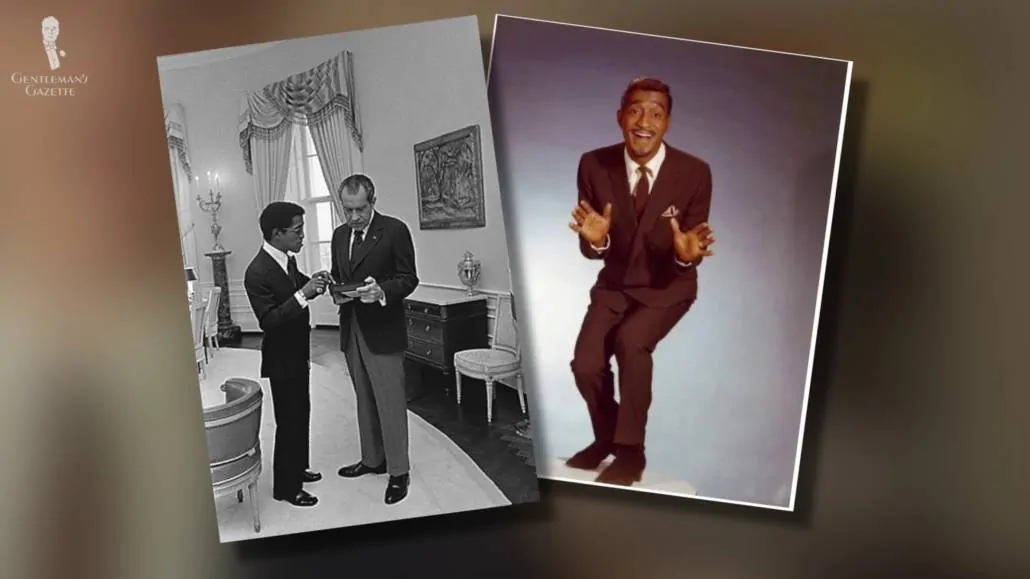
Many of his suits in the 1950s were likely made from mohair, which in contrast to the heavier wool suits of the 1940s, were made from a lighter softer, and more crease-resistant fabric. At this time, his jackets were cut straight in the body, and his pants had wider legs and often had pleats.
He also wore a somewhat conservative wardrobe throughout the early 1960s, again, following what was in fashion at the time. At this time, he came to favor slim-fitting one-button jackets with narrow lapels. He could, however, also be seen wearing double-breasted jackets from time to time, often with a six-on-two configuration.
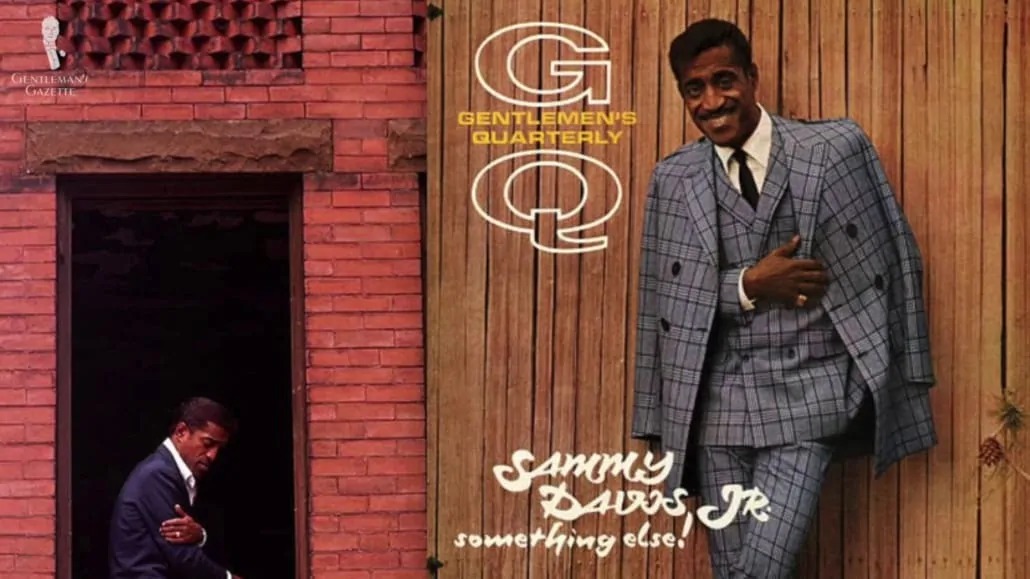
When the brighter colors and patterns of the mid to late 1960s arrived, Sammy was again quick to follow the trends here incorporating more flashy items into his wardrobe. This is exemplified in the GQ cover we mentioned previously, where not only is his suit and matching overcoat in a relatively bold pattern, but he’s also seen wearing a gold ring.
The slimmer lapels he came to favor also had the effect of making his shoulders look a bit broader in comparison, which helped to build up his small frame, as he was only about 5 feet, 5 inches tall.
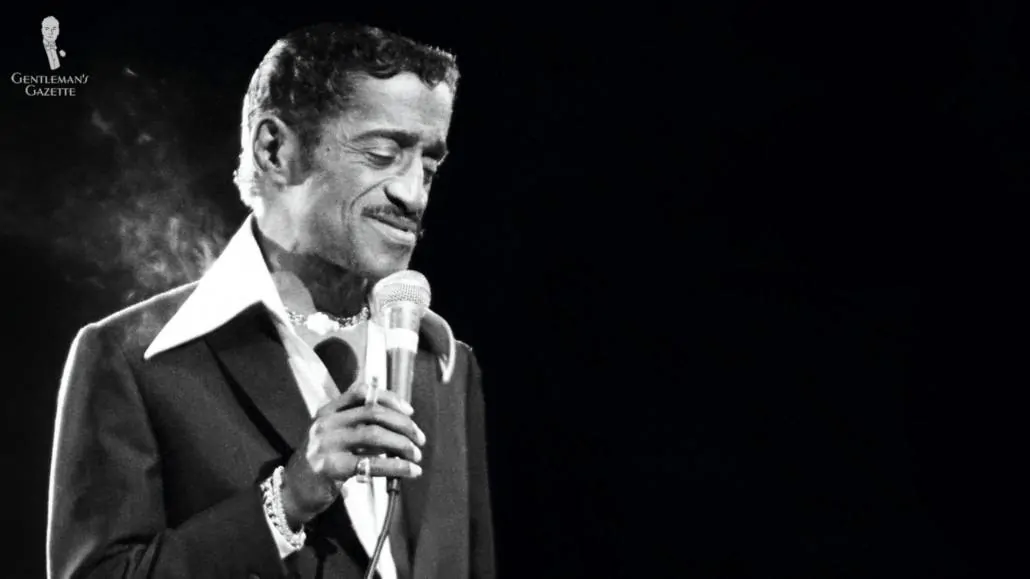
He also favored slim ties, which were in fashion in the late 50s and early 60s, but continued to wear them well past their initial point of popularity. He was also fond of wearing his top collar button undone and his ties somewhat loosely tied, as can be seen in Ocean’s 11 to give a bit of a more casual, sprezzatura-like feel.
Trousers Fit for An Entertainer
Davis’ entertainment style was energetic and really athletic, as he danced and moved across the stage. To accommodate this, he came to prefer trousers that were of a straighter cut, and also had no break so that his shoes were cleanly exposed.
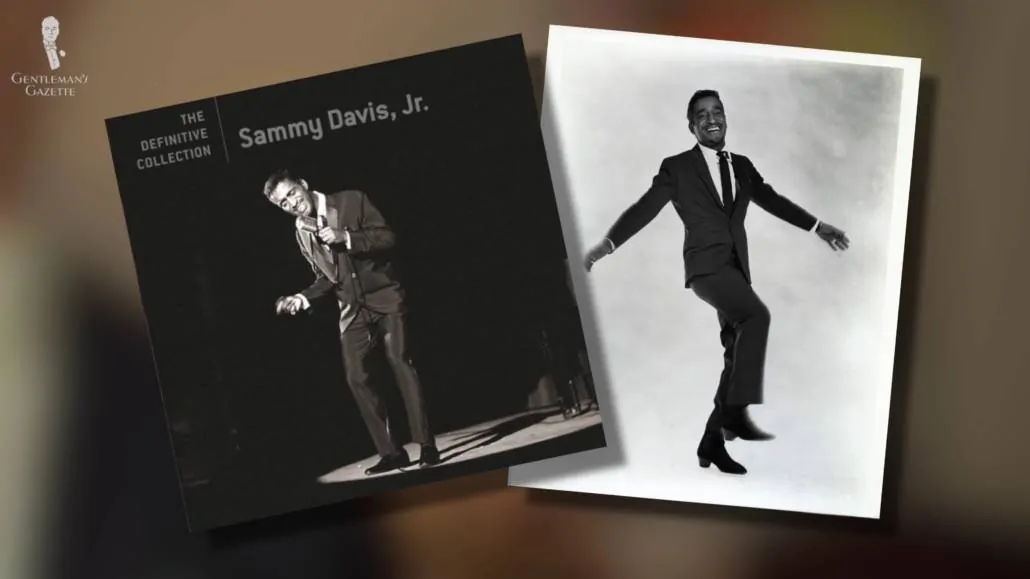
In addition to wearing trousers with little to no break, he also wore them with a relatively high waist to make his legs look longer. He was a fan of the Hollywood top trouser style, which had a waistband that extended higher than where the belt would sit.
Suits by Sy Devore
The Rat Pack was known to take advantage of the talents of Hollywood tailor Sy Devore, and through designing and building suits for them, Devore became almost as famous as the Rat Pack for a time.
At his shop on Sunset Boulevard in Hollywood, Devore became known for making suits for the Rat Pack out of a distinctive fabric known as sharkskin. This is a smooth worsted fabric that’s woven with two different colored sets of thread made from natural fibers, such as mohair, wool, or silk. The different colors give the final product a two-toned woven appearance creating a subtle texture.
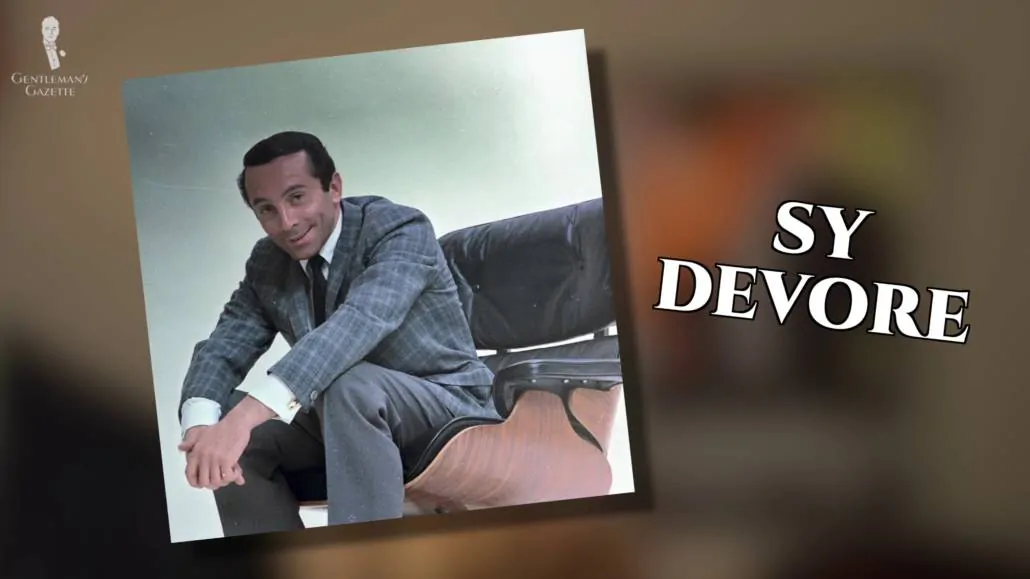
The overall effect, though, especially from a distance is still of a single color usually in dark grey or navy. And as you might expect, the name comes from the finish of the fabric, whose soft glossiness brings to mind the wet skin of a shark.
Jewelry: A Flashy Statement
Beginning in the 1950s, there was a consumer boom in America as the Second World War had ended, materials were now cheaper and people were more confident in spending than they had been previously. In fact, the economy would grow by about 37%, compared to the previous period in this time, and people were encouraged to buy more items that would previously have been considered luxuries, including jewelry like cufflinks or rings.
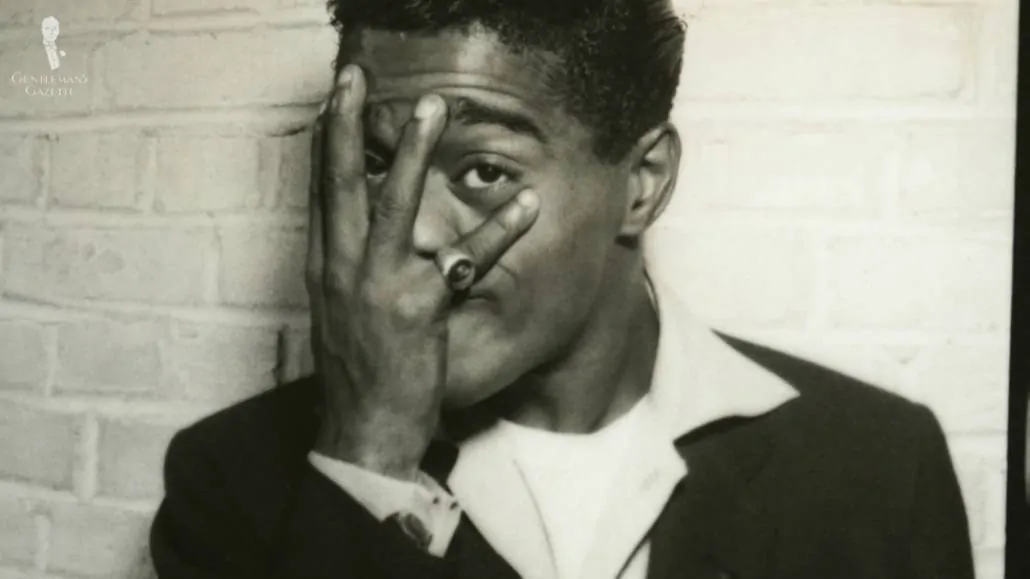
Celebrities of the time exemplified this and Davis was definitely one of them. He started by wearing a large gold pinky ring and became a fan of rings of all shapes and sizes.
He was also a fan of large, decorative, and flashy cufflinks, and in a memorable television appearance on the sitcom All in The Family, he wore a large gold medallion, which came to be associated with him in the broader popular culture.
His Glass Eye & Eyeglasses
As we’ve already discussed, Sammy only had the use of his right eye for most of his adult life and after moving from the eye patch to wearing a glass eye he also chose to wear glasses as a style accessory. He’s perhaps most well known for wearing a pair of Kazal 623 optical frames but these weren’t his only pair, as he could also be seen wearing styles with thicker rims or oversized shapes.
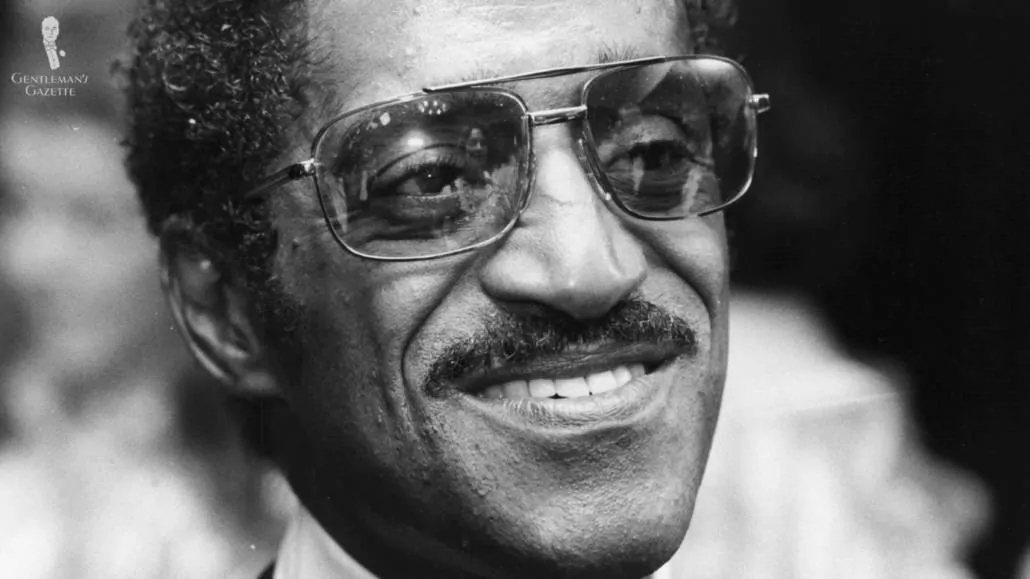
Sammy Davis’ Hairstyle
As for Davis’ hairstyle, it didn’t really vary much over the course of his life, as he preferred something slick and conservative. His hair did get a little bit longer at points in the 1970s, but by the 1980s he had returned to the style akin to a disconnected undercut that had made him famous. Of course, the disconnected undercut is one of a handful of classic hairstyles for gentlemen.
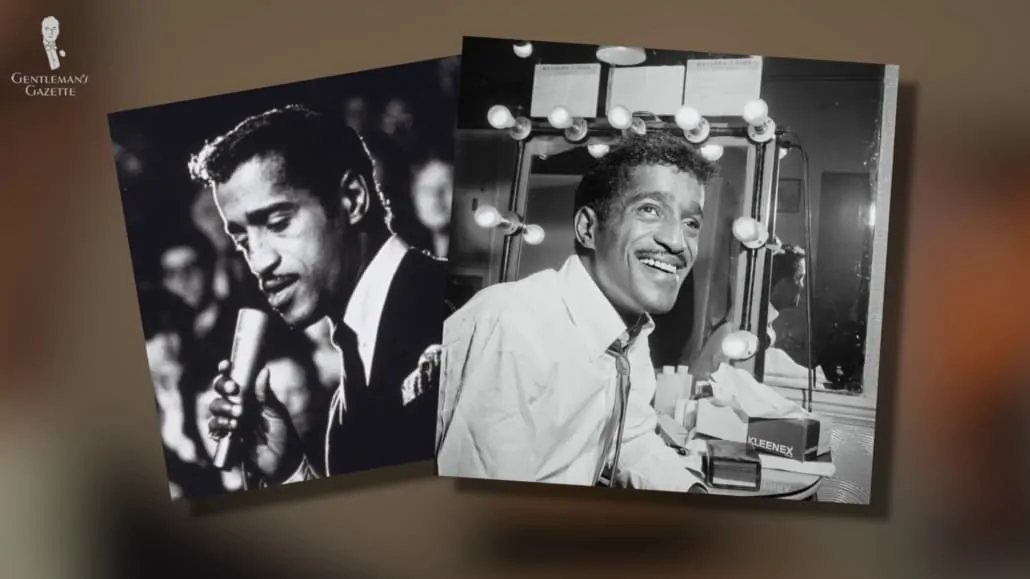
Black Tie Ensembles
Black Tie ensembles were a common feature of entertainers of Davis’ day, but much like his standard everyday suits, he was known to wear his Black Tie outfits in a somewhat nonchalant style.
He kept his lapels slim and while he would occasionally wear peaked lapels or a shawl collar, he was a fan of wearing notched lapel tuxedo jackets. While the notched lapel has come and gone over the centuries as a feature of Black Tie, we would today recommend that you wear a shawl collar or peak lapels as the most traditionally correct options.
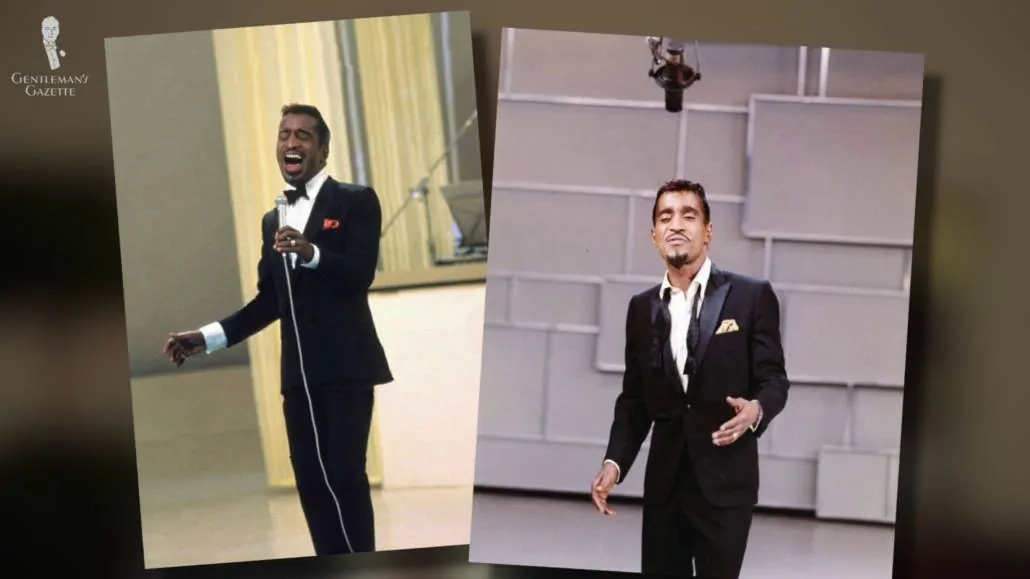
He would often wear a tuxedo shirt with pleated fronts and would always wear a self-tied bow tie. Indeed, it would often be untied at certain points during shows for an especially nonchalant look. Davis would also frequently wear a pocket square in a bolder and contrasting color. While a white linen square would be the most conservative choice for suiting or for tuxedos, Davis was often known to wear silk pocket squares in louder colors.
Emulating Sammy Davis Jr.’s Looks: Have Some Fun!
Of course, Sammy was comfortable playing around with the rules of different dress codes and added his own unique touches to things. And his wardrobe of course varied, both from day to day and from decade to decade. As we can see from both his suits and his tuxedos, which were well-tailored but worn with an air of casual elegance, one thing to keep in mind if you’d like to emulate Davis is to not take yourself too seriously.
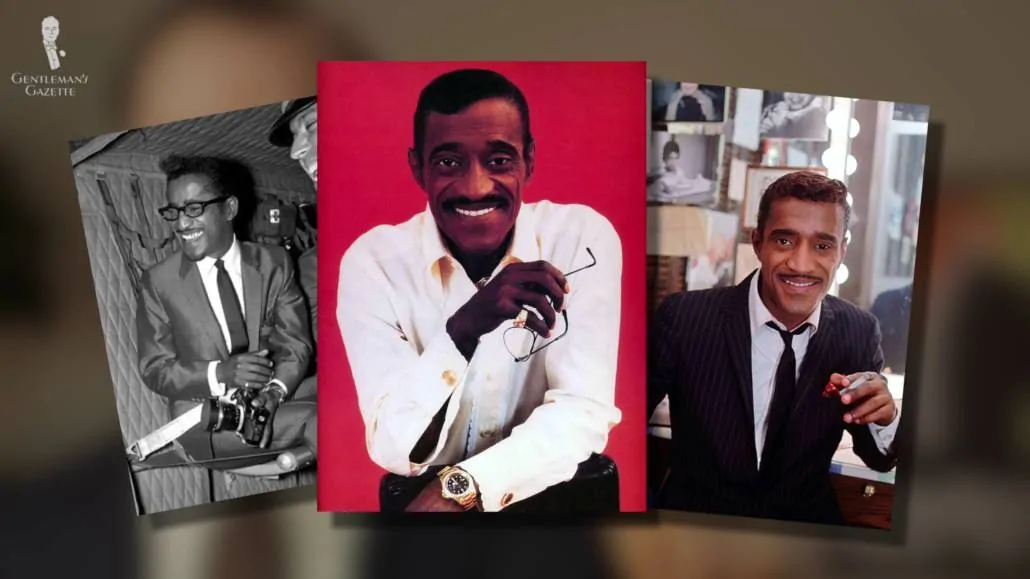
You could try to emulate the slick back hairstyle and pencil-thin mustache that Davis was known for at different points in his career but this might verge on being a bit costumey. If you’d like to go with a look that’s closer to what Davis wore earlier in his career in the 1950s and 60s, you’ll want to go with a slimmer fitting suit. It could be single or double-breasted in configuration, but adding a touch like jetted pockets for additional slimness would be a good choice.
While he was most frequently seen in suits, Davis wasn’t a stranger to the occasional sport jacket, so you could opt for one of these as well in a similar fitting style. Whatever the case, if going for this cleaner look we would recommend a shirt with a classic point or even a spear collar and a slim dark tie.
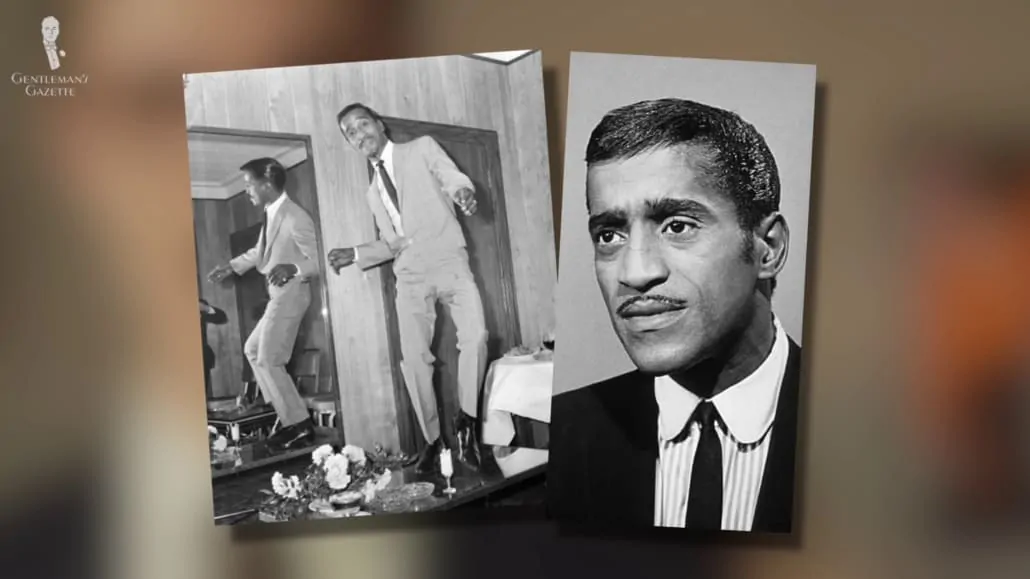
Conversely, if you’d prefer a slightly more casual look, you could, of course, go for unbuttoning the top button of your shirt collar We wouldn’t really recommend that you wear a loosely knotted tie with an open collar, but of course you could skip the tie altogether for more casual ensembles.
And as we mentioned, Sammy was a fan of loud and large jewelry. While if you were to go for styles he wore, they would probably look a bit dated today you could certainly go for something more modern and subtle. Don’t forget that eyewear, too! Eyeglasses or sunglasses with larger and wider frames, like aviators and wayfarers, can give you that Sammy Davis Jr. look.
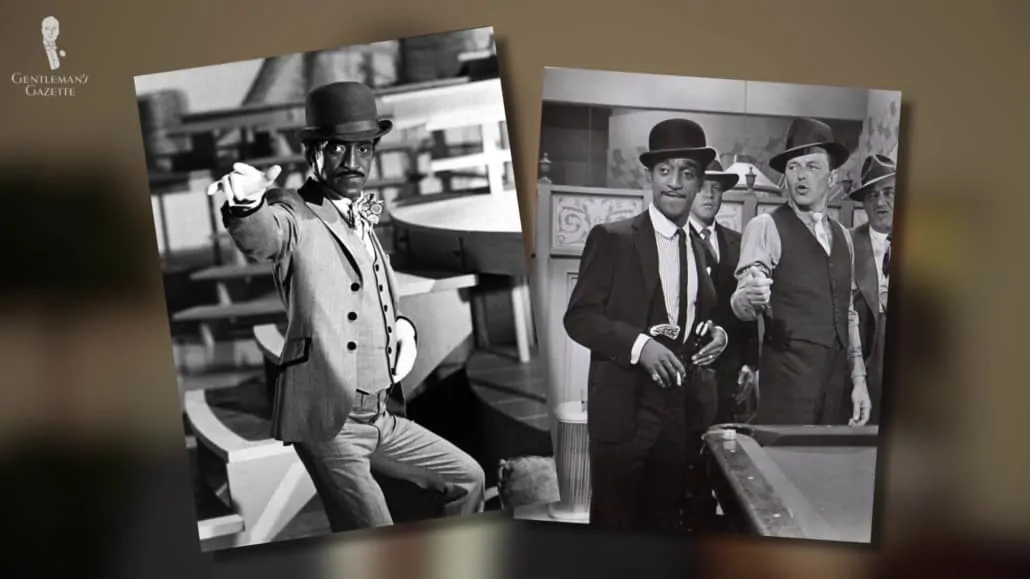
One bonus point here: we often discuss hats on our website, and indeed, Davis was no stranger to headwear. He would frequently wear bowler hats in film, but he was also seen wearing pork pies, fedoras, and other styles.
Conclusion
In conclusion, then, the crux of Sammy Davis jr’s style lay in taking the distinctive features of various trends over the decades and incorporating them into a larger style that was more timeless and unique. Even if you’re not interested in directly replicating his signature looks, the overall lesson to take from Sammy Davis is, again, not to take yourself too seriously and have fun with the way you’re dressing, so long as you also know what makes you look good.
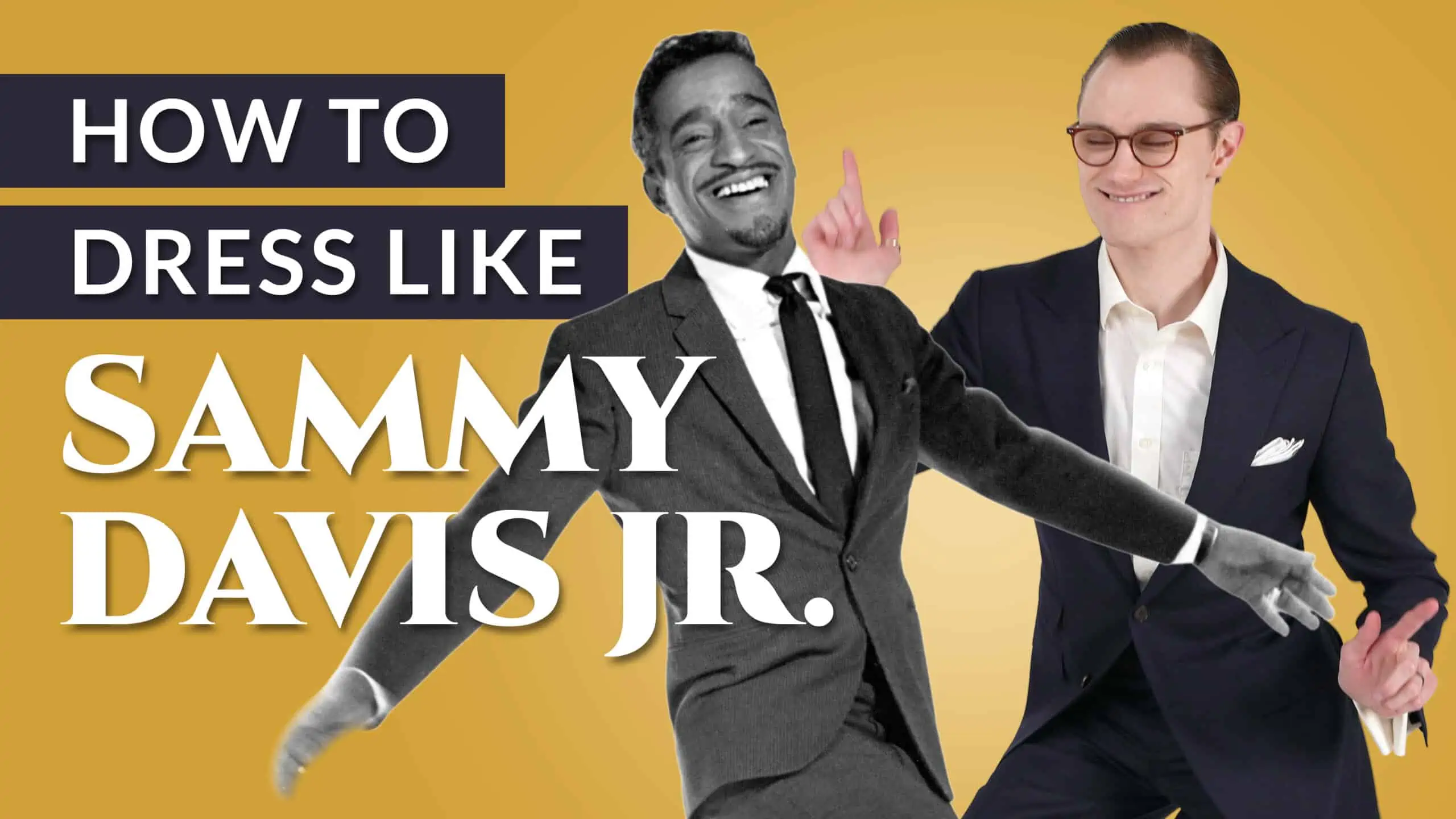
Careful about double-breasted suits; they look better on taller men.
I love GG but every once in a while you guys run right off the road. This is one of those times. IMHO – and I know it goes against the Vegas folklore narrative – only 3/5’s of the Rat Pack were not cringe-inducing, and of those, only 2/3 weren’t completely insufferable. Peter Lawford wasn’t in either group. The rest of the Pack must have had a meeting, and someone said, “We need at least one guy who’s not funny, a really mediocre actor, and can’t sing.” If only what happened in Vegas stayed there.
Chris,
You come across as an ankle biter.
Sammy was a splendid guy. Wish we still had him, or at least someone half as spectacular!
Great article!
Dave
You are well-entitled to your opinion, as am I, but seriously – ankle-biter? That’s just so . . . un-spectacular, Dave.
If you’re go-to is petulant name-calling when you disagree with someone then you really need to get better material.
and why’d you mention Sammy when I didn’t?
I worked at Harrah’s Lake Tahoe in the South Shore Room, from the mid-70’s to 1990. Entertainers like Sammy, Sinatra, John Denver, Glen Campbell, Mac Davis, Wayne Newton, Don Rickles, Bill Cosby and an incredible host of others did two shows a night there.
I was lucky enough to see Sammy probably 200 times during that period. The room seated 1000 people at most so it was very intimate. Unforgettable times.
In homage to the Candy Man, I named the senior Cocker Spaniel I adopted from the SPCA Tacoma Sammy D.